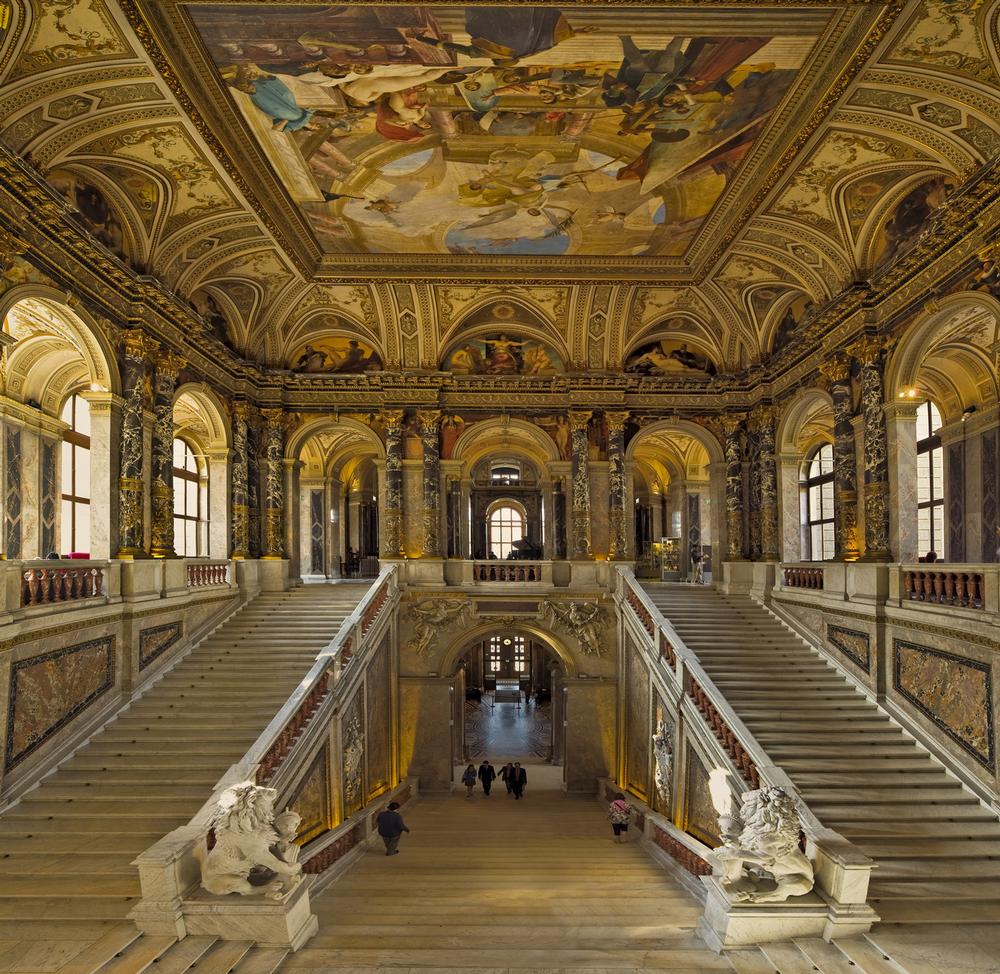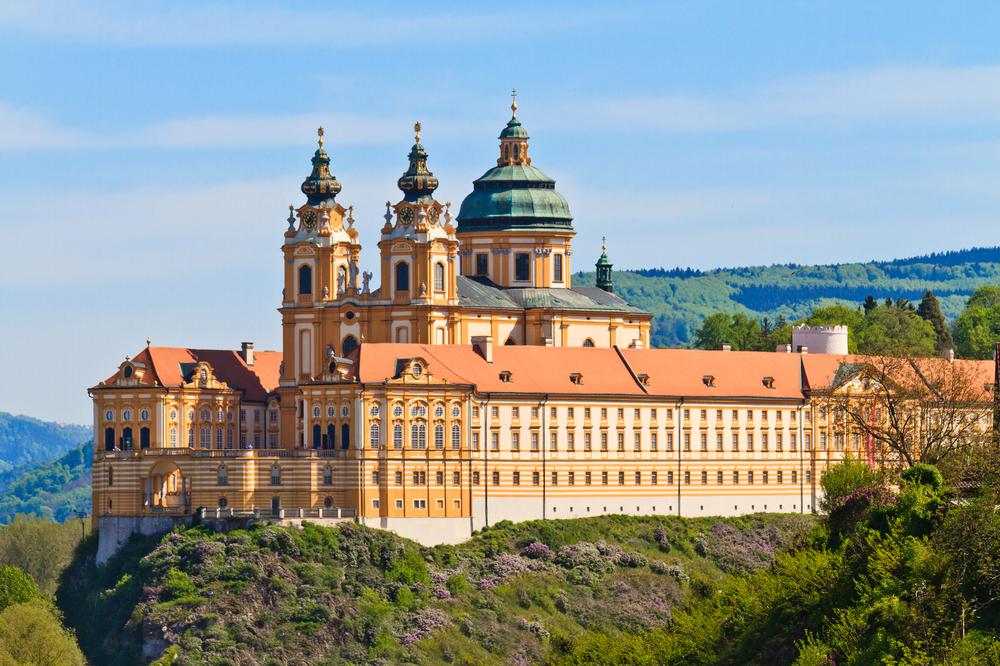In This Article
Planning a trip to Austria? From grand palaces to alpine peaks, this stunning country is packed with culture, nature, and once-in-a-lifetime sights you’ll never forget.
If you are in a hurry, I recommend:
- Tour the opulent Schönbrunn Palace in Vienna, once home to the Habsburgs.
- Wander the cobblestone streets and medieval charm of Salzburg, Mozart’s birthplace.
- Explore the magical lakeside village of Hallstatt, a UNESCO World Heritage site.
- Ski or hike the majestic Alps in Tyrol for breathtaking mountain views.
- Marvel at contemporary art and architecture in the city of Graz.
Unique Attractions in Austria:
1. Schonbrunn Palace

© Courtesy of mRGB - Fotolia.com
Schönbrunn Palace is a palace in Vienna that was formerly used as the imperial summer residence and remains one of the most impressive and significant architectural, historical, and cultural monuments in the country. The building is also a UNESCO World Heritage Site. Several ticketing options are available, and the two most popular tours are the Imperial Tour and the Grand Tour. The Imperial Tour visits 22 rooms and lasts about 30 to 40 minutes. The tour focuses on the different eras of the monarchy as well as the daily lives of the palace’s residents. Visitors will have the opportunity to visit the state rooms and private apartments of Franz Joseph and Sisi. The Grand Tour visits all of these rooms with an additional look at 18th-century state rooms from the era of Maria Theresia.
Schönbrunner Schloßstraße 47, 1130 Vienna, Austria, Phone: +4-31-81-11-30
2. Ambras Castle

© Courtesy of mary416 - Fotolia.com
Ambras Castle sits in the hills above the town of Innsbruck. The castle was built in the Renaissance style in the 16th century and is one of the most popular tourist attractions in the area. Early on, the site was the seat of the Counts of Andechs and later served as the residence of Archduke Ferdinand II. The Lower Castle is one of the oldest museums in Europe and contains the collection of Ferdinand himself as well as other pieces that have been added over the years. The Upper Castle contains approximately 300 portraits of rulers from the Habsburg family and other prominent Europeans from history.
Schloßstraße 20, 6020 Innsbruck, Austria, Phone: +43-15-25-24-48-02
3. Hofburg

© Courtesy of pure-life-pictures - Fotolia.com
Hofburg is a 13th-century palace in the center of Vienna that was the former imperial palace, the seat of the Habsburg dynasty, and the official residence and office of the president of Austria. The Hofburg was the primary resident of rulers during the winter months. The palace has been expanded many times throughout the years and contains a large number of wings. Three museums at the palace depict everyday life in the court of Vienna as well as the home, furnishings, and silver collection. Guests can visit the imperial apartments of Franz Joseph and Elizabeth, which are furnished with beautiful furniture and decor from the 18th and 19th centuries.
Michaelerkuppel, 1010 Vienna, Austria, Phone:+44-15-33-75-70
4. Goldenes Dachl, Austria

© Courtesy of Mattoff - Fotolia.com
The Goldenes Dachl, or Golden Roof, is an iconic landmark in Innsbruck’s old town. The structure consists of a copper-gilded roof built in 1500 using 2,738 copper tiles. The balcony overlooks the city square and was used by the emperor and his wife to celebrate momentous occasions such as tournaments, festivals, and other public events held in the square. The front of the structure is decorated with murals and carved reliefs. There are eight coats of arms and various other interesting decorative features. The Golden Roof Museum features information and entertainment related to the emperor’s rule and daily life from the time the Golden Roof was built.
Herzog-Friedrich-Straße 15, 6020 Innsbruck, Austria, Phone: +4-35-12-53-60-14-41
Romantic Attractions in Austria:
5. Hellbrunn Palace

© Courtesy of Anibal Trejo - Fotolia.com
Hellbrunn Palace is a palace in Salzburg from the early baroque period. The palace was built by the Prince-Archbishop of Salzburg, Markus Sittikus von Hohenems, as a daytime summer palace. There is no bedroom in Hellbrunn, so the archbishop rarely spent the night there. The park surrounding the palace includes a stone theater, a small building called the Monatschlossl, and a nearby zoo. One of the most popular attractions are the famous jeux d’eau, or “watergames,” on the palace grounds. These are trick fountains that often spray guests unexpectedly in hilarious ways, such as from the seat of a chair that one is seated in.
Fürstenweg 37, 5020 Salzburg, Austria, Phone: +43-66-28-20-37-20
6. Hofkirche

© Courtesy of Anibal Trejo - Fotolia.com
The Hofkirche is a Gothic church in Innsbruck that was constructed in the mid-1500s. The church was constructed by the Emperor Ferdinand I as a memorial to his grandfather, Emperor Maxmillian I. Maximillian’s marble cenotaph stands in the middle of the nave, but does not contain the body of the revered emperor. The tomb has a series of stone reliefs depicting the emperor’s life and several interesting statues depicting family members, ancestors, and horses of the emperor surrounding the tomb. The church also contains the sarcophagus of Philippine Welser, Andreas Hofer’s funerary monument, and an organ that is nearly 500 years old.
Universitätsstraße 2, 6020 Innsbruck, Austria, Phone: +4-35-12-59-48-95-14
7. Krimml Waterfalls

© Courtesy of mRGB - Fotolia.com
The Krimml Waterfalls, the highest waterfalls in the country, are situated on the Krimmler Ache river in the High Tauern National Park near the town of Krimml. The waterfall is a tiered waterfall that contains three significant drops. There is a well-maintained path that travels to the upper section of the waterfall and offers stunning panoramic views. The hike up the waterfall begins in the village of Krimml and includes three stages, with several scenic views along the way. The hike takes about 1.5 hours to reach the Bergerblick at the top of the falls. If you wish to take a break along the way, there is a restaurant, the Schoenangerl, at 4,216 feet.
5743 Krimml, Austria, Phone: +43-65-64-72-12
Unique Museums:
8. Kunsthistorisches Museum

© Courtesy of Blickfang - Fotolia.com
The Kunsthistorisches Museum, or Museum of Art History, is one of the many art museums in Vienna. It is housed in a palace-like building with an octagon-shaped dome. The museum was opened by Franz Joseph I in 1891 along with the Museum of Natural History, which is similar in appearance and faces the Kunsthistorisches from across Maria-Theresien-Platz. The museum primarily holds the Habsburg’s large art collections and has an especially large number of portraits and pieces of armor as well as paintings of Archduke Leopold Wilhelm. There are also several Old Master paintings from the likes of Michelangelo and Raphael.
Maria-Theresien-Platz, 1010 Vienna, Austria, Phone: +4-31-52-52-40
9. Leopold Museum

© Leopold Museum
The Leopold Museum is an art museum in Vienna’s Museumsquartier. The museum has one of the largest collections of modern Austrian art. A wide range of Austrian artists are included in the museum such as Gustav Klimt, Richard Gerstl, and Oskar Kokoschka. The museum also has the world’s largest collection of Egon Schiele pieces. Most of the museum’s artworks were collected by Austrian art collectors Elisabeth and Rudolf Leopold, who amassed more than 5,000 works over a period of 50 years. The Leopold Museum Shop contains a selection of art-related souvenirs, prints, apparel, and gifts. There is also a small coffee shop in the museum and plans for a larger cafe are in the works.
Museumsplatz 1, 1070 Vienna, Austria, Phone: +4-31-52-57-00
10. Melk Abbey

© Courtesy of Zechal - Fotolia.com
Melk Abbey is a Benedictine abbey that overlooks the town of Melk. The abbey is home to the tomb of Saint Colman of Stockerau as well as many members of the House of Badenburg, which was the first ruling family of the country. The abbey was founded in 1089 and later became home to a monastic school and a significant monastic library, which was well known for its large manuscript collection. The baroque building that stands on the site today was constructed in the early 1700s and still exists as a school today. Self-guided visits are available from April to early November, however from November to March guests must arrange a pre-booked tour.
Abt-Berthold-Dietmayr-Straße 1, 3390 Melk, Austria, Phone: +43-27-52-55-50
📔 I get asked this a lot so I decided to include it:
-
Q: Where is Austria located?
-
A: Austria is a landlocked European country located in the Alps.
-
Q: Why is Austria known as a winter sports destination?
-
A: Austria is famous for its world-class skiing and snowboarding.
-
Q: What makes Austria's cities special?
-
A: Austria's historic cities are postcard-perfect, featuring cathedrals and castles set against the magnificent Alps.
-
Q: What historical attractions can visitors find in Vienna?
-
A: Vienna is home to historic palaces like the Belvedere, Helbrunn, and Schönbrunn palaces.
-
Q: What can visitors expect from Austria's museums?
-
A: Austria has many world-class museums with rare pieces of art and historical artifacts.
Plan Your Trip












